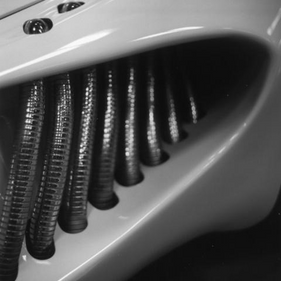1996 Colani Horch Mega-Roadster
- Story Cars

- Oct 25, 2021
- 1 min read
Like much of Colani's work, his Horch prototype proposed all sorts of excess -- excess in line and curve, excessive consumption, excessive power. Fitting, considering Horch did produce eight-cylinder luxury cars up to and during its time as one of the four carmakers combined to form Auto Union in 1932. Also, like much of Colani's work, it extensively used his signature style of sensual biomimicry in the guise of advanced aerodynamics. Colani always intended the lack of straight lines in his designs to reflect the human form. Likely not an authorized design by Audi, the Horch was reportedly Colani's follow-up to his L'Aiglon concept car from 20 years prior, a sort of neoclassic design with bulbous front fenders overshadowed only by the cartoonishly long hood and cowl-to-front-axle ratio. While not as long, Colani's Horch concept remained equally ostentatious with its Utah 8-like fenders, Buick-like grille, and proposed 16-cylinder power.
In actuality, as we can see from the photos of the Horch on its auction profile, Colani employed a Ford V-8, reportedly a 460-cu.in. version good for 620 horsepower. The cowl appears full of GM components, while the dash looks like Colani used his Jeg's catalog. Dubbed the Mega-Roadster, it initially appeared painted silver with a hardtop spanning the cabin and blackwall tires before Colani resprayed it purple and added the whitewalls. Exactly how it ended up in a debt collection auction in the Swiss canton of Aargau, the auction description makes no note; according to the auction company, no paperwork accompanies the car, nor does the unique hood ornament.
Images: Colani Design; Raimond Ray Strauß

%20(4)_edited.png)


































































Comments